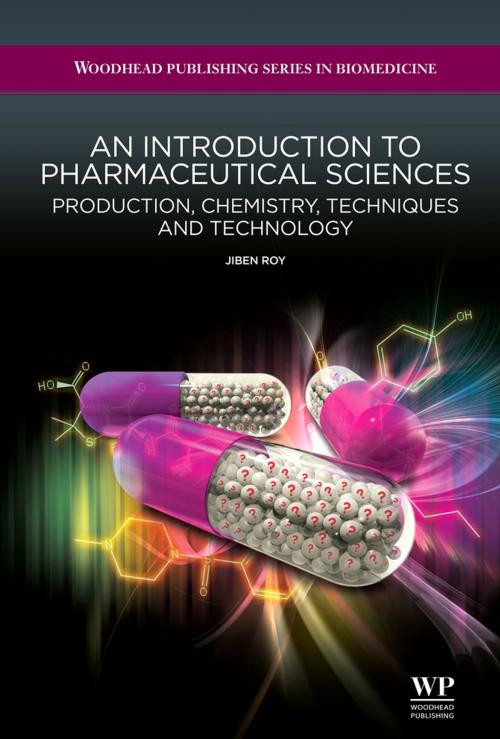An Introduction to Pharmaceutical Sciences
Production, Chemistry, Techniques and Technology
Nonfiction, Health & Well Being, Medical, Medical Science, Pharmacology| Author: | Jiben Roy | ISBN: | 9781908818041 |
| Publisher: | Elsevier Science | Publication: | July 25, 2011 |
| Imprint: | Woodhead Publishing | Language: | English |
| Author: | Jiben Roy |
| ISBN: | 9781908818041 |
| Publisher: | Elsevier Science |
| Publication: | July 25, 2011 |
| Imprint: | Woodhead Publishing |
| Language: | English |
This textbook is written as a unified approach to various topics, ranging from drug discovery to manufacturing, techniques and technology, regulation and marketing. The key theme of the book is pharmaceuticals - what every student of pharmaceutical sciences should know: from the active pharmaceutical ingredients to the preparation of various dosage forms along with the relevant chemistry, this book makes pharmaceuticals relevant to undergraduate students of pharmacy and pharmaceutical sciences.
This book explains how a particular drug was discovered and then converted from lab-scale to manufacturing scale, to the market. It explains the motivation for drug discovery, the reaction chemistry involved, experimental difficulties, various dosage forms and the reasoning behind them, mechanism of action, quality assurance and role of regulatory agencies. After having a course based on this book, the student will be able to understand: 1) the career prospects in the pharmaceutical industry, 2) the need for interdisciplinary teamwork in science, 3) the techniques and technology involved in making pharmaceuticals starting from bulk drugs, and 4) different dosage forms and critical factors in the development of pharmaceutical formulations in relation to the principles of chemistry.
A few blockbuster drugs including atorvastatin, sildanefil, ranitidine, ciprofloxacin, amoxicillin, and the longest serving drugs such as aspirin and paracetamol are discussed in detail. Finally, the book also covers the important current pharmaceutical issues like quality control, safety, counterfeiting and abuse of drugs, and future prospects for pharmaceutical industry.
- Unified approach explaining drug discovery, bulk drug manufacturing, formulation of dosage forms, with pharmacological and therapeutic actions
- Manufacturing processes of representative active pharmaceutical ingredients and their chemistry plus formulation of dosage forms presented in this book are based on actual industrial processes
- Covers many aspects relevant to students of the pharmaceutical sciences or newly employed pharmaceutical researchers/employees. It contains summary information about regulatory agencies of different countries
This textbook is written as a unified approach to various topics, ranging from drug discovery to manufacturing, techniques and technology, regulation and marketing. The key theme of the book is pharmaceuticals - what every student of pharmaceutical sciences should know: from the active pharmaceutical ingredients to the preparation of various dosage forms along with the relevant chemistry, this book makes pharmaceuticals relevant to undergraduate students of pharmacy and pharmaceutical sciences.
This book explains how a particular drug was discovered and then converted from lab-scale to manufacturing scale, to the market. It explains the motivation for drug discovery, the reaction chemistry involved, experimental difficulties, various dosage forms and the reasoning behind them, mechanism of action, quality assurance and role of regulatory agencies. After having a course based on this book, the student will be able to understand: 1) the career prospects in the pharmaceutical industry, 2) the need for interdisciplinary teamwork in science, 3) the techniques and technology involved in making pharmaceuticals starting from bulk drugs, and 4) different dosage forms and critical factors in the development of pharmaceutical formulations in relation to the principles of chemistry.
A few blockbuster drugs including atorvastatin, sildanefil, ranitidine, ciprofloxacin, amoxicillin, and the longest serving drugs such as aspirin and paracetamol are discussed in detail. Finally, the book also covers the important current pharmaceutical issues like quality control, safety, counterfeiting and abuse of drugs, and future prospects for pharmaceutical industry.
- Unified approach explaining drug discovery, bulk drug manufacturing, formulation of dosage forms, with pharmacological and therapeutic actions
- Manufacturing processes of representative active pharmaceutical ingredients and their chemistry plus formulation of dosage forms presented in this book are based on actual industrial processes
- Covers many aspects relevant to students of the pharmaceutical sciences or newly employed pharmaceutical researchers/employees. It contains summary information about regulatory agencies of different countries















